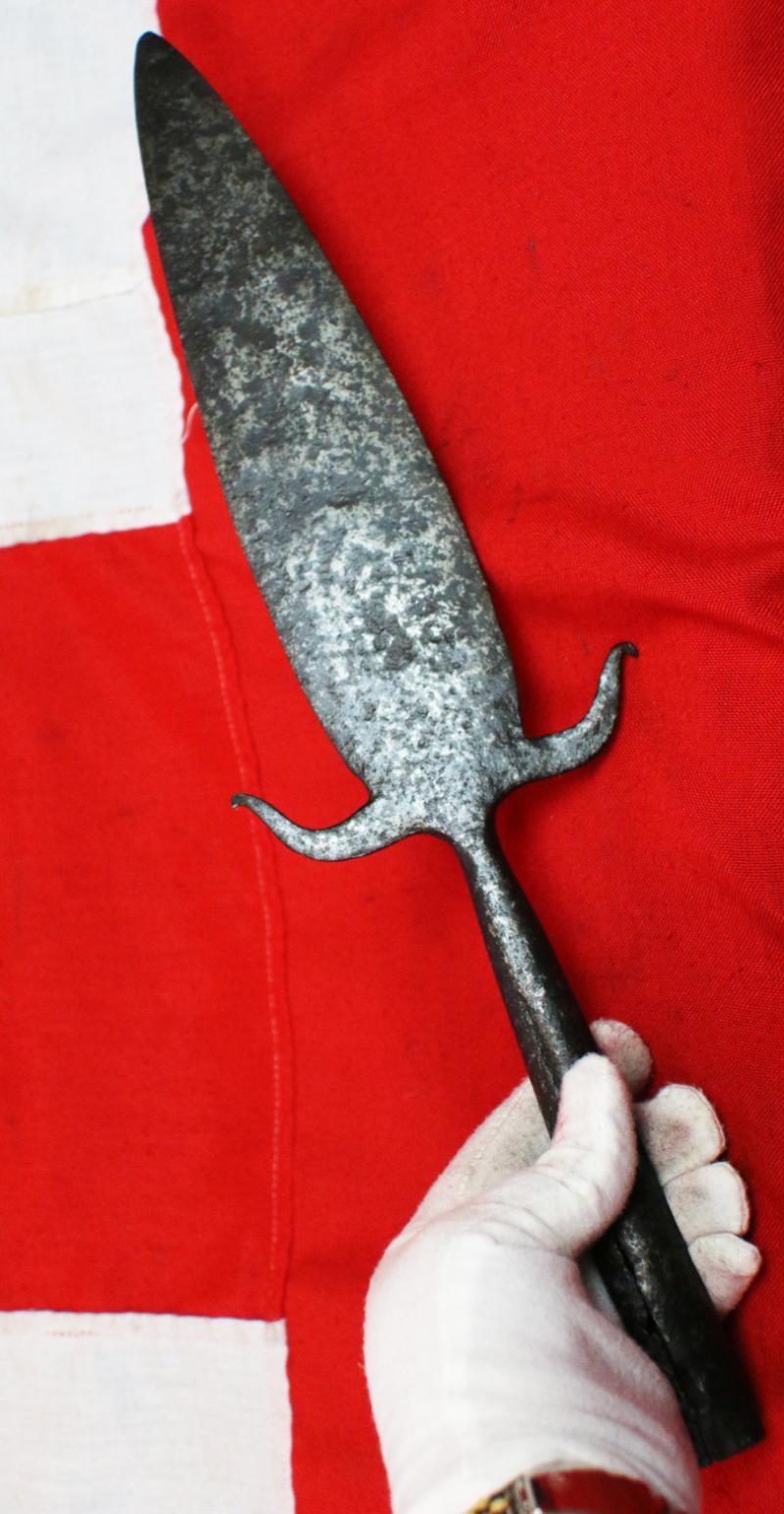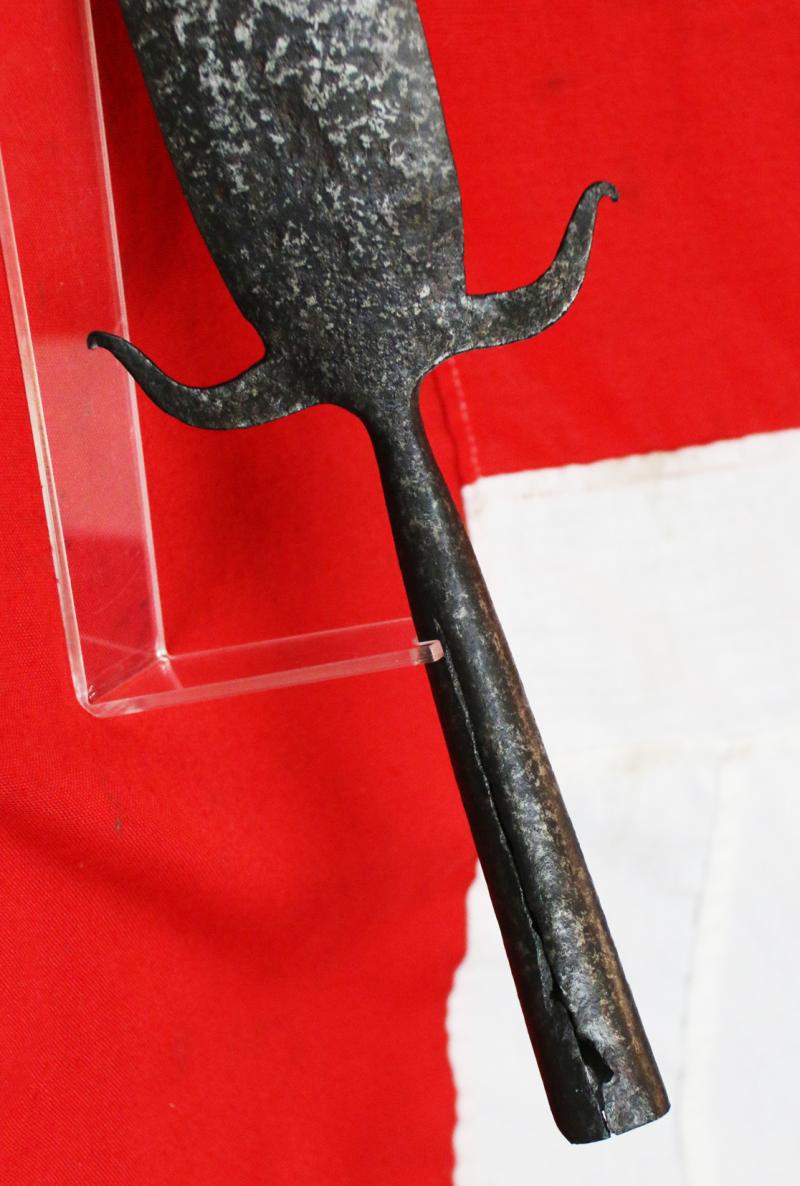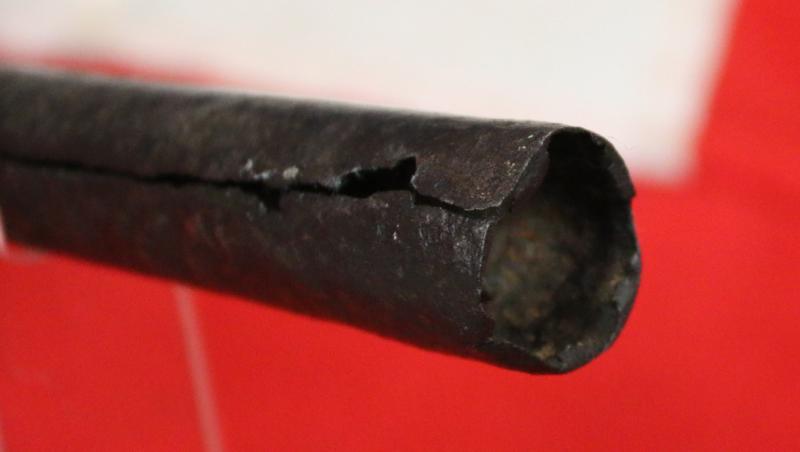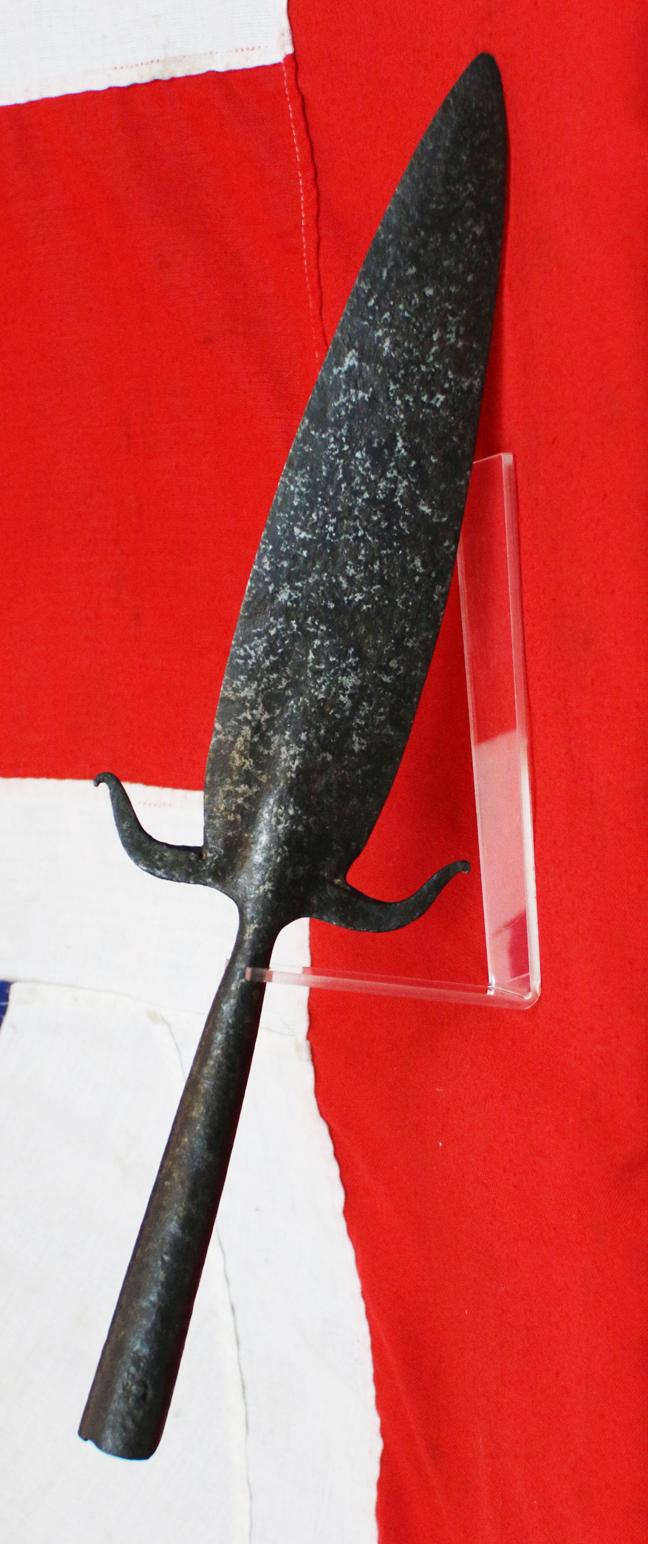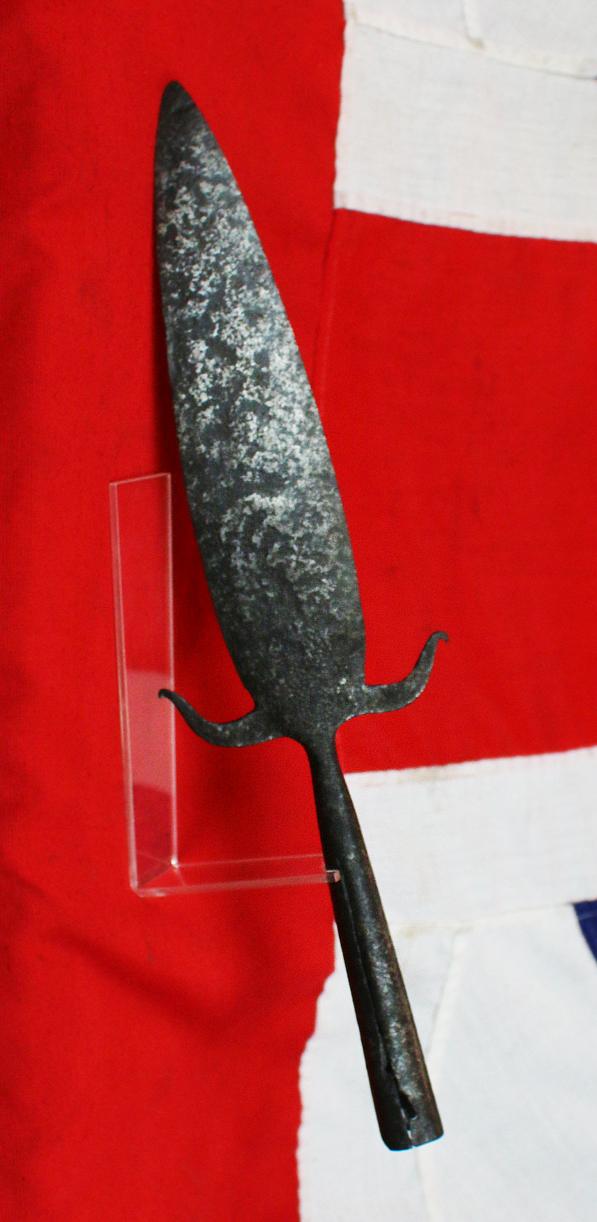An Original & Super, 17th Century English Civil War Period Pikeman's Partizan Polearm Head
A most scarce 17th-century Dutch partizan head with "wings" or projections at the base. These weapons were used by infantry soldiers to fend off cavalry and could be used to trap an opponent's sword. The partisan was a common polearm in the 15th and 16th centuries, gradually evolving from a short spear.
We are very privileged to be the UK’s premier original military antiques gallery and website, and to be able to consistently, continually, and regularly, offer the finest original collectors items in our shop for over 100 years
A partisan (also partizan) is a type of polearm that was used in Europe in the 16th, 17th, and 18th century. It consisted of a spearhead mounted on a long shaft, usually wooden, with protrusions on the sides which aided in parrying sword thrusts. Like the halberd, it quickly became obsolete with the arrival of practical firearms, although it stayed in use for many years as a ceremonial weapon. In profile, the head of a partisan may look similar to that of a ranseur, spontoon, ox tongue, or septum; however, unlike a ranseur, the lower parts of the head have a sharpened edge.
This is a gorgeous example of a heavily-used head of a Partizan polearm likely used during the 17th Century. This lovely example is most certainly of Continental European origin, likely German, and dates to the early to mid 17th Century.
The partizan head measures roughly 17½” long with a maximum width of 4 3/4”. The condition is overall jolly good for age, completely intact with no signs of damage
Polearm
A polearm or pole weapon is a close combat weapon in which the
main fighting part of the weapon is fitted to the end of a long shaft, typically of wood, thereby extending the user's effective range and striking power. Polearms are predominantly melee weapons, with a subclass of spear-like designs fit for both thrusting and throwing. Because many polearms were adapted from agricultural implements or other fairly abundant tools, and contained relatively little metal, they were cheap to make and readily available. When warfare would break out and the belligerents had a poorer class who could not pay for dedicated military weapons, leaders would often appropriate tools as cheap weapons. The cost of training was comparatively minimal, since these conscripted farmers had spent most of their lives using these "weapons" in the fields. This made polearms the favored weapon of peasant levies and peasant rebellions the world over.
Polearms can be divided into three broad categories: those designed for extended reach and thrusting tactics used in pike square or phalanx combat; those designed to increase leverage (thanks to hands moving freely on a pole) to maximize centrifugal force against cavalry, and those designed for throwing tactics used in skirmish line combat. Because their versatility, high effectiveness and cheap cost, polearms experimentation led to many variants and were the most frequently used weapons on the battlefield bills, picks, dane axes, spears, glaives, guandaos, pudaos, poleaxes, halberds, harpoons, sovnyas, tridents, naginatas, bardiches, war scythes, and lances are all varieties of polearms.
Code: 25737
895.00 GBP

